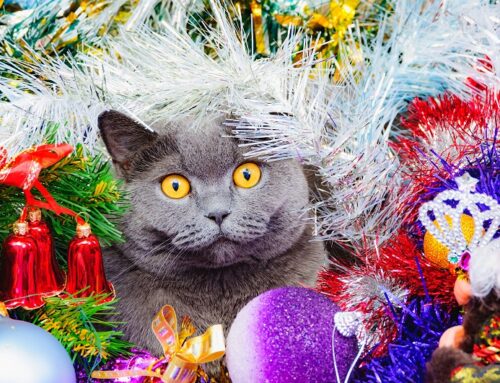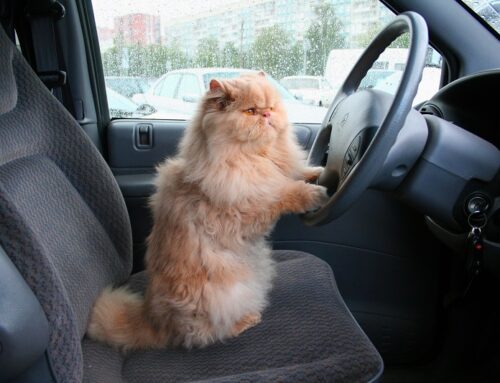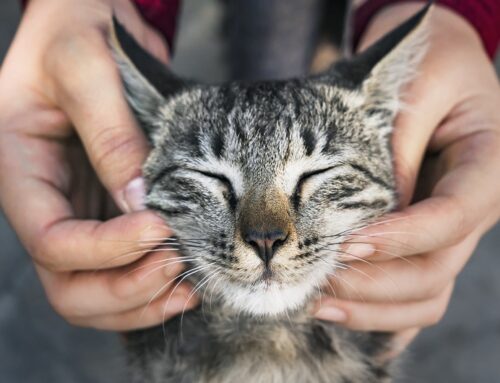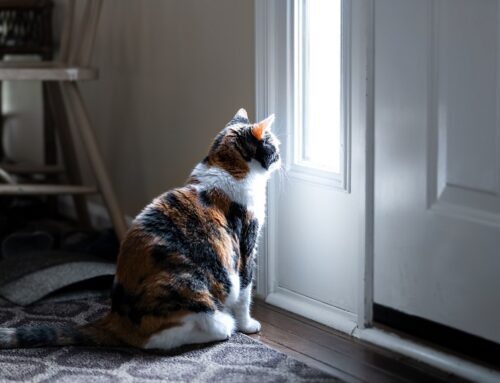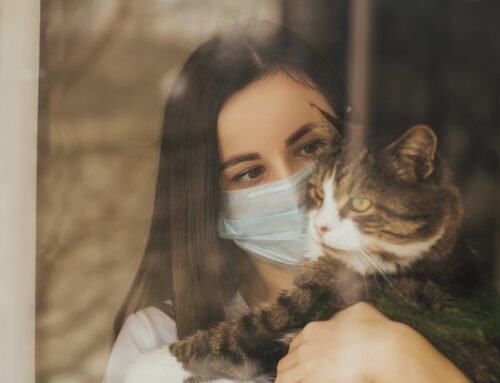DIABETES: a dreaded diagnosis that no pet owner wants to hear. But, is it really all doom-and-gloom? The short answer is “NO.” Many cats can live full lives, especially if the disease is caught early. We have actually been seeing far fewer cases of diabetes as more owners are opting to feed more cat-appropriate diets, such as low-carb canned food. (For more information on a proper cat diet, you can revisit our newsletter series HERE, HERE, HERE, and HERE.)
How do you know if your cat might be diabetic? Cats are often good at hiding symptoms of illness, but the classic signs of diabetes are greatly increased thirst and urination. These symptoms appear over several weeks to months, and owners sometimes notice additional symptoms of increased appetite and weight loss. As the disease progresses, worsening symptoms will include vomiting, diarrhea, weakness, lethargy, neuropathy (weakness) of the hind legs, and eventually death.
So, how do cats become diabetic? First, we need to understand that there are two types of diabetes: Type 1 and Type 2. In Type 1 diabetes, the pancreas (for various reasons) stops producing insulin. These cats need to be on insulin injections for the rest of their lives. Type 2 diabetics are insulin resistant. This means that the pancreas can still produce insulin, but due to other factors such as obesity and inappropriate diet, the body no longer responds appropriately to the insulin.
Furthermore, Type 2 diabetics can go into remission, and almost all younger cats that become diabetic fall into this category. Can a Type 2 diabetic become a Type 1? Yes, but this tends to occur more often in older cats, and it is usually because of chronic pancreatic inflammation (pancreatitis). Long-term steroid use can also cause at-risk cats to become diabetic.
Can you help prevent your cat from becoming diabetic? For Type 2 diabetes: Yes! For Type 1 diabetes: not so much, as there are multiple causes of pancreatitis. Type 2 diabetes tends to occur in overweight cats, especially those on a dry food (kibble) diet. Cats are carnivores, and their bodies are designed to process meat and organs.
ALL dry food has too little meat protein and too many carbohydrates (and grain-free foods will contain starches instead), and cats are not designed to process plant-based sugars, especially in the amounts present in dry food. Almost all overweight cats we see are on dry food, either as the sole diet or with canned food. Also, not all canned foods are created equal. In general, we want to avoid foods with gravy (carbs). Cats should eat a diet that contains less than ten percent carbohydrates, and this is not something that can be found on the food label. However, there is a website (catinfo.org) that has the protein, fat, and carbohydrate information for many of the commercially available canned foods.
So, why is diabetes so dreaded? It is not usually dreaded for the cat’s quality of life or prognosis, but more for the owner’s pocketbook. Diabetes can be an expensive disease. Cats need long-acting insulin, which can run $150-300 a bottle. The “good” news is that a bottle will last 2 – 4 months, but this is still not inexpensive.
Diabetic cats also need weekly to monthly “blood curves” to monitor progression of the disease. A curve is where the blood sugar is checked every few hours over half a day to see how the body is responding to the insulin. Some people will do a “spot check” in place of a curve to try and cut down on costs, but this can actually do more harm in the long run, if the cat’s insulin dose is being changed based on inaccurate information. We have seen cats actually receiving too much insulin because the dose kept being increased based only on spot checks, when in fact, they were actually needing a lower dose of insulin, based on their blood curve.
Diabetes is one of the most common endocrine diseases we see in cats, and for many, can be well-managed or can go into remission. Type 2 diabetes is preventable, especially with proper diet and weight management. Fortunately, the nice thing is that cats on an appropriate diet will also tend to maintain better weight. If you think your cat might be diabetic or are worried about your cat becoming diabetic, it is best to schedule an exam so that we can evaluate your cat’s lifestyle and do testing, if indicated.




